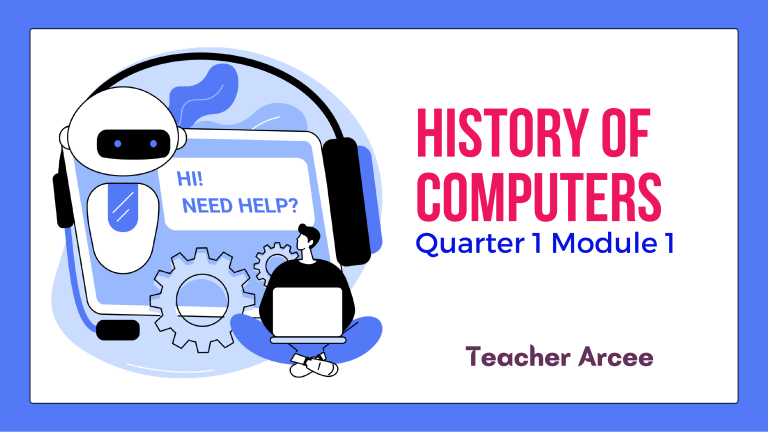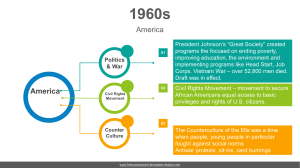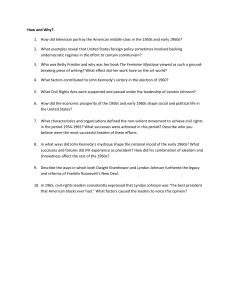
HISTORY OF COMPUTERS Quarter 1 Module 1 computing devices in early times 1 Chinese Abacus 5 Tabulating Machine 2 Pascaline 6 Napier's Bone 3 Jacquard's Loom 7 Schickard's Machine 4 Analytical Engine 8 Leibnitz Calculator CHINESE ABACUS About 4000 years ago Chinese Abacus was invented. This toll helps to add and subtract numbers, the function of the rods can move only back and forth to perform simple arithmetic. pascaline blaise pascal Blaise Pascal is a French mathematician, he invented a machine that can count fast. He called it PASCALINE. This machine is intended to avoid mistakes or frequent repetition of counting large numbers. It could add and subtract long numbers without making a mistake and it can perform counting faster than Abacus. jacquard's loom joseph marie jacquard By 1801, a French weaver found a faster way to weave a cloth. He was Joseph Marie Jacquard. He invented a machine that could follow instructions from punch cards. These cards were fed into the machine. The punch holes in the cards looked like patterns. These were used to weave cross-stitch designs on the cloth thus, the machine was known as the Jacquards Loom. analytical engine charles babbage Later in 1883, an American named Charles Babbage designed a machine that could do a lot of things by itself. This machine could solve problems using programs. And it could store instructions just like a modern computer. He called his invention the “ANALYTICAL ENGINE”, because of his great idea he became the “Father of Modern Computers”. Lady Augusta Ada Byron was a close friend of Charles Babbage. She made the sets of instructions for the Analytical Engine to follow. Since these instructions were stored in the engine, it could easily do the instructions repeatedly. These sets of Instructions were known as programs. lady augusta ada byron Thus, Lady Augusta Ada Byron was known as the “World’s First Programmer”. tabulating machine herman hollerith Dr. Herman Hollerith is an American statistician who invented a counting machine in just two weeks, he called it “Tabulating Machine”. At that time, there were no available machines that could help the government count the number of people living in a certain country. Thus, Hollerith’s invention helped taking a census easier for the government. A census counts the number of people living in a city or town, made by the government officials. napier's bone john napier John Napier is a Scottish mathematician who developed an early mechanical calculating device for multiplication and division. The device was termed Napier’s bones due to the set of numbered rods, which are made of bones. The figure in the rods are lined up to make simple calculations. schickard's machine wilhelm schickard Wilhelm Schickard, a German scientist who invented a machine in 1623 that uses sprocket wheels to add, multiply and divide numbers. leibnitz calculator gottfried wilhelm leibnitz Around 1670’s, a German mathematician invented another counting machine. Gottfried Wilhelm Leibnitz called it “LEIBNITZ CALCULATOR”. This machine works better than the Abacus and the Pascaline. It can add, subtract, multiply and divide, it can even find the square root of a number. Computer Definition A computer is a machine that performs tasks according to specific commands at great speed and high degree of accuracy. It is a machine that speaks its own language and needs a programmer that gives instructions for which it was designed. It can perform arithmetic algorithms such as addition, subtraction, multiplication and division. First Generation 1950s Second Generation 1960s Third Generation late 1960s Fourth 1970s Generation 1980s 1990s Fifth Generation beyond GENERATIONS OF COMPUTER TECHNOLOGY First Generation 1950s Second Generation 1960s Third Generation late 1960s Fourth 1970s Generation 1980s 1990s Fifth Generation beyond Computers of the first generation consist of large and expensive vacuum tubes, which were very undependable. These tubes burned out fast and usually have to be replaced to keep the program going. The UNIVAC I is one good example of a first-generation computer. First Generation 1950s Second Generation 1960s Third Generation late 1960s Fourth 1970s Generation 1980s 1990s Fifth Generation beyond These were computers which used transistors instead of vacuum tubes. Transistors were smaller and more dependable than vacuum tubes. They were also more energy efficient as they gave off less heat, resulting in faster computers. But these were still slower compared to later computers. First Generation 1950s Second Generation 1960s Third Generation late 1960s Fourth 1970s Generation 1980s 1990s Fifth Generation beyond The coming of Integrated Circuits (ICs) greatly speeded computing time and reduced the size of computers. The ICs can contain thousands of transistor making it possible to make smaller but more powerful computers. Software and programs began to be developed during this time, but they still were behind advancements in hardware or computer parts. First Generation 1950s Second Generation 1960s Third Generation late 1960s Fourth 1970s Generation 1980s 1990s Fifth Generation beyond As more circuits were compressed into single chips, there was an increase in the speed and reliability of computers. There was also greater storage capacity with the coming of new storage disks. It was during this time that programs and software became more up-todate. Microcomputers, called Personal Computers (PCs), were also developed. First Generation 1950s Second Generation 1960s Third Generation late 1960s Fourth 1970s Generation 1980s 1990s Fifth Generation beyond Chips became super-fast and powerful. Among these is the Pentium chip created by Intel Corporation, which has Pentium 5 as the latest in their series. The fifth generation of computer technology saw the widespread use of computers in terms of worldwide applications such as the Internet, teleconferencing, and various modes and various other advanced computer applications such as artificial intelligence, simulations and



